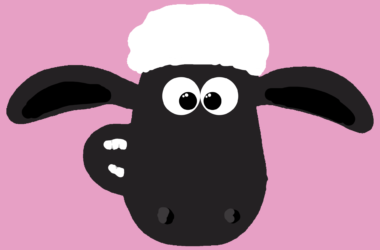There’s a clear reason why Ian Falconer, who illustrated David Sedaris’s latest book, Squirrel Seeks Chipmunk: A Modest Bestiary, only uses shades of red and black in his illustrations. It’s because the stories, which tersely detail single events in the lives of animals, are often bloody and bleak.
But it’s also a matter of economy. You’ll read this book very quickly because the writing is so matter of fact. Each short story is basically reducible to one simple, bluntly shocking action or event, and in that way, Falconer’s illustrations, which are beautiful, naive, funny, and tragic, might tell Sedaris’s stories better than Sedaris can himself.
Sedaris wrote Squirrel Seeks Chipmunk, his first full book of fiction, knowing it would be illustrated, so the stories and illustrations work in a symbiotic relationship. What Sedaris might have purposely omitted in description, Falconer delineates visually.
There really aren’t any descriptions of the animals’ physical attributes in these stories. Don’t we all know what a bear or a mouse or a stork looks like? Perhaps not. Falconer, who authored the Olivia children’s books, shows us what we’d expect. But there’s always a little more—a human expression or posture—that elides the inherent morbidity of most of the stories.
It would be easy to say Sedaris wrote this book of animal fables and foibles as an allegory to critique the seeming absurdity of human interaction, but I don’t think Sedaris is that kind of writer. He’s not that sanctimonious. Writing about animals allows Sedaris to reveal a world of gore and desperation that would be harder to get at—with taste, at least—if he were writing about people.
Because these stories are fantasy, it doesn’t really matter if certain facts and happenings don’t add up. A baboon grooms a cat? A mouse owns a snake? A squirrel dates a chipmunk? OK. These scenarios aren’t really funny, and Sedaris doesn’t always seem to try to make them so.
Sure, you’ll probably laugh, but sometimes you might be disturbed, perhaps by the lab rat injected with pancreatic cancer, the walls of his tank “soiled here and there with bloody paw prints and flecks of vomit,” or by the motherless bear, who becomes a sort of gimp concubine, “her jaws … sunken, her gums swollen with the abscesses left by broken teeth.”
These descriptions aren’t tasteful, but that seems to be the point. A lot of the animals are duplicitous, murderous, and predatory because that’s really how they are.
The stories don’t form a common thread. Their realities sometimes operate on different planes. Because a parrot is a journalist in one, you might assume people don’t exist. But then in another, you get the point of view of a setter owned by people.
The point is it doesn’t matter. These are more vignettes than stories, as are many of Sedaris’s essays, and despite the morose humour prevalent in his writing, he usually finds a way, in the end, to be bashfully sweet and sensitive. Perhaps he is a humourist, but I usually remember his writing for how he comes to understand himself. Humour might be a path to that, but it’s not an end.
You could view these new fictional stories in a similar same way. Yes, they’re short and bleak and flat, punctuated with gore, but sometimes—and this is Sedaris at his best—they can be unexpectedly and clumsily touching.








